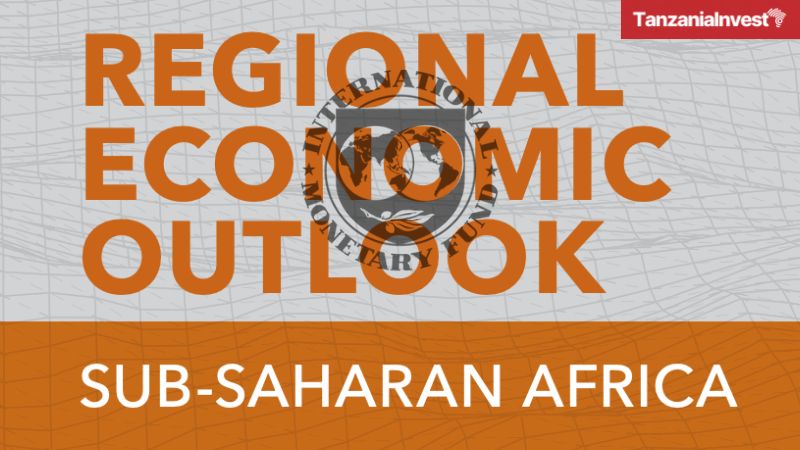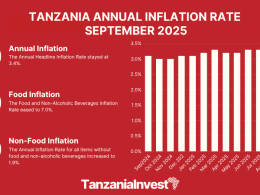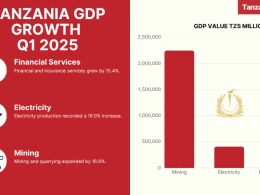The International Monetary Fund (IMF) has released its October 2025 issue of the Regional Economic Outlook: Sub-Saharan Africa, projecting a Gross Domestic Product (GDP) growth of +6.0% and +6.3% for Tanzania in 2025 and 2026.
Sub-Saharan Growth and Inflation in 2025 and 2026
Sub-Saharan Africa’s economic growth is projected to remain steady at 4.1% in 2025 with a modest pickup in 2026, supported by macroeconomic stabilization and reform efforts in key economies.
Resource-intensive and several conflict-affected countries continue to face significant headwinds.
Median inflation has eased from over 6% at the end of 2023 to around 4%, driven by lower global food and energy prices alongside tight monetary policies.
Nevertheless, inflation is projected to remain in double digits through at least the end of 2025 in about one-fifth of the region, including Angola, Ethiopia, Ghana, and Nigeria.
Tanzania Economic Growth and Inflation in 2025 and 2026
The IMF projects Tanzania’s economy to maintain strong growth momentum over the next three years.
Real GDP growth is expected to reach 6.0% in 2025 and 6.3% in 2026, reflecting continued expansion supported by investment and policy reforms. Inflation is projected to remain moderate, with consumer prices rising from 3.3% in 2025 to 3.5% in 2026, indicating stable price conditions.
The overall fiscal balance, including grants, is expected to remain at –3.0% of GDP through 2026, reflecting sustained fiscal discipline.
Government debt is forecast to decline from 49.6% of GDP in 2025 to 48.3% in 2026, indicating prudent debt management.
The external current account, including grants, is projected to remain stable at 3.9% of GDP in both 2025 and 2026, supported by exports and foreign inflows.
Broad money as a share of GDP is expected to ease from 32.5% in 2025 to 30.9% in 2026, in line with monetary policy objectives.
Tanzania’s Tax Reforms and Investment Financing
In the report, the IMF highlights Tanzania for successfully implementing reforms to strengthen domestic revenue mobilization.
The Fund notes that Tanzania’s coordinated tax administration reforms—introducing a risk-based approach, staff training, improved case management, and better data quality—led to about a 20% rise in assessed taxable income.
Tanzania is also mentioned in the context of innovative financing, with renewable energy identified as a sector that could benefit from blended finance combining concessional and commercial capital.










